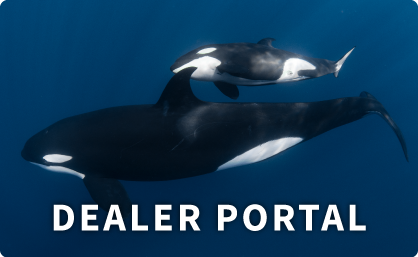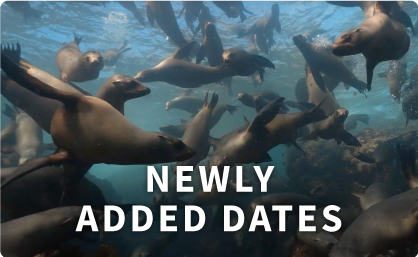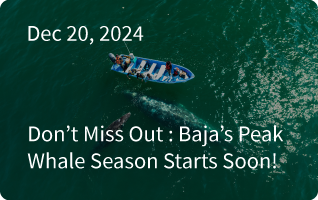There are so many surprises that nature throws at you that you are sometimes bewildered by the diversity of what it has to offer. Whether you are amazed by the acrobatics of humpback whales or find it hard to differentiate between a manta and a mobula, you will never cease to be astounded by what might emerge from the depths of the ocean.
Spectacular First Dive at Punta Tosca
Our first dive at Punta Tosca was breathtaking, it was dolphins and tunas all the way. As we hit the water, a pack of dolphins came within handshaking distance and started playing with the divers! Super fun but soon there was more. We were drifting and another group of dolphins checked us out as they escorted a cute baby dolphin!
At the safety stop, we saw a big school of tunas but soon the dolphins appeared again chasing and going after the tunas. A sight for the Gods!
The rest of the day was great too, the current slowed down, and we were able to enjoy the reef with a treasure trove of sea creatures nestling against it – Mantas, hammerheads, lots of sea turtles, some small Galapagos sharks, and sleeping white tip sharks.
Close Encounters with Humpback Whales
I love encounters with whales, they are so huge yet nimble, majestic, and yet sprightly. I have always wondered why humpback whales jump so much. Regardless of the number of times I have seen them breaching and lifting their tails out of the water, each is different and unique, calling attention to their frolics. I watch it amazed and it makes me very happy!
Today at Punta Tosca, between dives, a humpback and its calf gave us a memorable show. For almost half an hour, the jumbos carried out lithe acrobatics that belied their size, gracefully exposing their bellies and tails, jumping out of the water repeatedly. It seemed the mother was taking her calf through the ropes, preparing it for life ahead.
Why do the humpbacks do it? Experts say there are multiple reasons that explain this behavior including communicating underwater, stunning fish, shedding parasites, playing, or just giving free rein to their zest for life.
Confused! Is it Mantas or Mobulas
Contrary to our perception, differentiating between oceanic mantas and mobulas is not easy. We think that it is impossible to get confused but often nature has the last laugh.
Here is a live example from something really funny that happened today in Punta Tosca. After the dive, we were in the process of putting together the slideshow while checking the videos of a guest. We understood that we had been diving with a spine-tail devil ray (Mobula modular) but we only realized that from the video. The spine-tail devil ray can reach 320 cm disc width and if we do not see it from the front, it looks very similar in size to a juvenile male oceanic manta.
However, the easiest way to differentiate a manta from a devil ray is the position of the mouth and the shape of the cephalic fins. In the case of mantas, the mouth is between the cephalic fins while for mobulas, the mouth is in the ventral area. There are 8 different types of devil rays but only the spine-tail devil ray can be as big as the mantas. Another incredible contribution of nature, one that a trained eye can differentiate only even though these are two separate species.
So much for now. We will be staying overnight at Cabo Pearce, recharging our body batteries, and getting all tuned up for tomorrow’s adventure.








